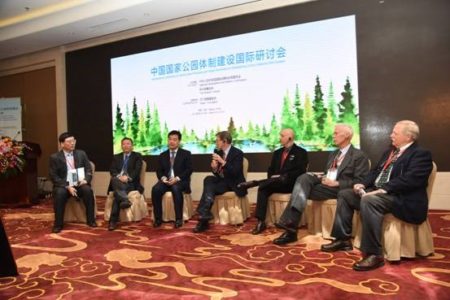
An international conference on sharing best practices and ideas worldwide for establishing China’s National Park System was held recently by the Paulson Institute, in collaboration with the National Development and Reform Commission (NDRC), facilitated by the Heren Foundation. Eight experts from the U.S., New Zealand and China gave reports on natural protected area systems, the relationship between national parks and protected areas, the development of national park systems, as well as spatial planning, scientific research management, environmental education, and legal protection of national parks. Panel discussions were held on governance of national parks and other protected areas, natural resources conservation, concession operation systems, national parks and community development, and other topics.
The establishment of a national park system aims both to better conserve the resources and value of important natural habitats and landscapes, as well as to facilitate greater enjoyment by visitors. More than 100 countries have established nearly 10,000 national parks, which play an active role in the conservation of national natural ecosystems, as well as natural and cultural heritage. The U.S. national park system traces back to 1872, when its first national park, Yellowstone National Park, was created. As of January 2017, the U.S. National Park Service manages a total of 417 national park units, dozens of “affiliated areas,” 30 national trails, and 48 national heritage areas.
At the conference, former and current U.S. national parks officials noted that national parks are a reflection of a country’s national image—highlighted not only by unique and important natural ecosystems, but also by unique natural landscapes and cultural connotations. The establishment of a national park system aims to improve effective conservation, anchored by a unified and standardized management system. As national parks are in theory owned by the people of the nation, the experts said, it is important to actively engage the public and raise awareness to enhance park management.

The U.S. and Chinese experts noted that national parks should provide both education and recreation opportunities for the public under the premise of effective conservation, so as to preserve the authenticity and integrity of natural ecosystems and natural and cultural heritage. The ultimate goal, the experts said, is to protect the country’s important natural ecological resources so that they can be carried over to future generations.
The Paulson Institute is working with the NDRC to help establish guidelines for China’s national parks system, with the help of case studies of six other countries’ experiences. The Institute is also supporting research and planning work in the area around Mount Wuyi (Wuyi Shan) in Fujian Province, one of China’s nine pilot national parks.



